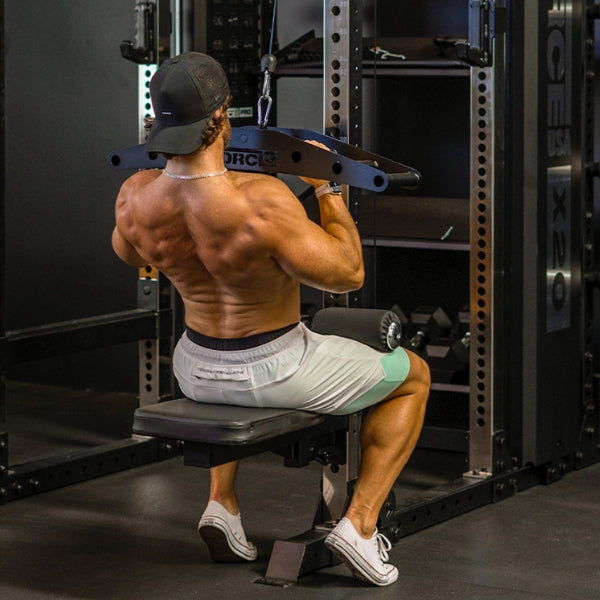How To Master The Pull Up And Build Upper Body Strength
The Pull Up is, without doubt, one of the most essential upper body exercises that you can perform, with endless benefits for your overall strength, fitness and physique.
This foundational exercise builds your chest, shoulders, biceps, forearms, back, latissimus dorsi and not to mention improving your core and overall grip strength.
For any day-to-day gym goers out there looking to add this fundamental compound exercise to their workout program, then read on!
Why is the Pull Up so hard?
The Pull Up is considered an advanced exercise because it requires considerable upper-body strength. What looks effortless to veteran gym rats is actually one of the hardest things to perform correctly.
Pull Ups are hard because they require you to lift your entire bodyweight up with just your arms and shoulder muscles. If you don't already have significant strength, this can be a major challenge. Because the exercise uses so many muscles, you need to have holistic upper body strength to perform them.
The good news is this exercise responds well to frequency, so once you master it, you’ll be performing Pull Ups like a pro!
Take Advantage of a Pull Up Progression Plan
If you’re looking to perform your very first pull up or complete an entire set, then a Pull up progression plan can help you build the strength, coordination and endurance you need.
By moving through simple Pull Up Regression Exercises, then Pull Up Variations and Assisted Pull Ups, most people can then progress to a full, unassisted Pull Up. Try these variations to turn those pull-up attempts into pull-up sets:
Dead Hangs
To do Pull Ups you’ll need grip strength and dead hangs are the ideal way to build it. Hang from an overhead bar with your arms outstretched and your body in the hollow position with your feet off the ground. 5-10 seconds is the sweet spot for a Dead Hang for beginners.

Negative Pull-ups
Now see if you can actually support your weight from the top down by standing underneath the bar then jumping up and lowering yourself slowly to the point where you can actually have straight arms and your feet off the floor.
- A 3-5 second range is perfect for Negative Pull Ups.
- Add a Plyometric Box to your Negative Pull Ups for even more assistance and to reduce the risk of injury.
- As your negative pull-ups become easier, widen your grip position and width to increase the intensity of your decline and target your Lat muscles.
The Banded Pull Up
We absolutely love this exercise here at Gym and Fitness as it teaches you the full movement pattern and greater volume in your Pull Ups to begin strengthening all the key muscles.
Most importantly, the Exercice Bands will help you develop explosive pulling power, which is central to achieving other movements, such as Muscle Ups.
- Attach the band to a Pull-Up Bar (stand on a box to do this)
- Stretch the band down and step one foot into the band.
- Lower yourself down into the bottom position, and pull up.
- Experiment with different band elasticities (green has the most resistance strength)

Other exercises to build Pull Up strength
Many personal trainers also recommend adding other exercises to support strengthening the muscles that are used when completing a pull-up. Helpful exercises include the Inverted Row, Lat Pulldown, Renegade Rows, and Seated Row as they not only boost your upper body and core strength, but they improve coordination and ensure the right muscles are firing together.

What does a correct Pull Up look like?
Once you’ve mastered the progressive variations and built some strength in your biceps, rhomboids, traps, chest, and forearms, you should be close to completing a full set of Pull-Ups! It now becomes important to make sure that you keep the correct technique to get the most benefits and minimise muscle strain.
- Hang off the bar completely straight in a dead hang.
- Now tighten your core and get into the hollow position.
- Un-shrug your shoulders and take pull your elbows down until your chest touches the bar
- Lower back down in a slow, controlled way
- Start again from the hollow position and repeat the process

Pull Ups take time to perfect
No matter what your fitness levels or strength goals are, performing Pull Ups can require patience as you progress. Focus on your movement patterns over volume, allowing you to build technique, explosive power and confidence over time.
The amazing versatility and overall benefits of this classic exercise is the perfect milestone for anybody out there looking to step up their training and stay motivated!

